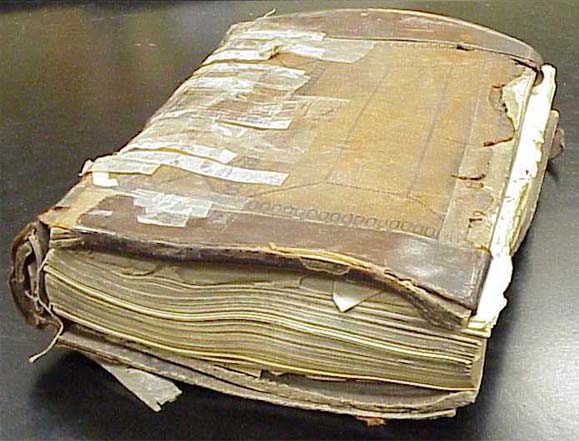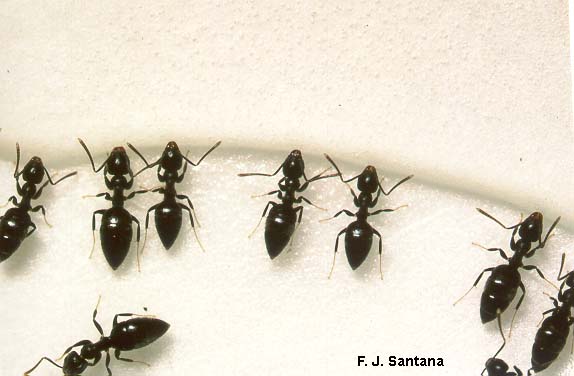External Contributing Factors
External factors also contribute to the deterioration of paper:
Light - visible light has a bleaching action causing whitening and fading of paper colour. At the same time invisible damage occurs, the ultraviolet light (from sun and fluorescent lighting) causes chemical changes in the paper by promoting the oxidation of cellulose fibers. A minute fraction of the light energy entering a room is responsible for the photo-catalysed degradation of paper; and after oxidation has occurred the fibers in the paper are broken down into smaller units, until they are so short that they can no longer maintain the bond necessary to hold paper together. This results in the embrittlement of paper. Light also causes any lignin (which may be present) in the paper to react with other compounds and turning it a yellow colour.
 http://www.kdla.net/pubrec/preslabbroch.htm
http://www.kdla.net/pubrec/preslabbroch.htm
Temperature and humidity - fluctuations in temperature and humidity called cycling, weaken and eventually break down the fibers in paper by causing the water contained in the paper to expand and contract.
Air pollution - sulfation occurs when water, carbon monoxide, sulfur dioxide etc react to form sulfuric acid. The sulfur dioxide gas is absorbed by paper where it reacts with moisture to form sulfuric acid. The acid hydrolysis breaks down the cellulose causing discoloration, embrittlement and disintegration of the fibers. Other gases such as nitrogen dioxide and hydrogen sulfide, which evolve from the combustion of fossil fuels, also cause paper deterioration.
Insects - paper contains cellulose, proteins and carbohydrates, which come from the use of sizing agents, glue, wood pulp etc. these are very attractive to insects, which feed on them.
 http://sarasota.extension.ufl.edu/IPM/imgfiles/Baited_ants.htm
http://sarasota.extension.ufl.edu/IPM/imgfiles/Baited_ants.htm